Music education in Tanzania: 100 years of different approaches
By Mitchel Strumpf
For most people of Tanganyika living 100 years ago[i], one’s culture consisted primarily of a single set of agreements: social, political, economic, linguistic and many other agreements plus, as a focus of this paper, the agreements of sounds that were liked and disliked, and arranged in ways that established what the people of the culture called ‘music’. This changed as time moved on and the agreements of colonial masters, religious missionaries, commercial adventurers and others influenced, more and more, ‘single-cultured’ to ‘multi-cultured’ music practices in Tanganyika. Through a series of ‘approaches’, this text provides an oveview of the various ways in which music education has taken place in Tanzania over the past 100 years.
 Students at the Dhow Countries Music Academy (DCMA) in Zanzibar. Photo: DCMA/Facebook
Students at the Dhow Countries Music Academy (DCMA) in Zanzibar. Photo: DCMA/Facebook
Approach I: Music enculturation in Tanganyika/Tanzania
One can only set the stage when trying to formulate a picture of the approach used in the early 1900s by carriers of local Tanganyika cultures to enculturate children into the sound agreements that they equate with ‘music’ or, more specifically, ngoma, the whole sound/movement experience people hold as part of their culture in East Africa, including Tanganyika/Tanzania. While there was cultural movement and educative influences on music in Tanganyika well before the early 1900s[ii], as populations heard and were influenced by the music traditions of their neighbours near and far through the migrations of other African people and people of other cultures of the world who had come into Tanganyika, major effects from influences on music traditions by the media (ie. radio stations that only started in East Africa in 1928 and newspapers) had not generally occurred.
One may only assume that in Tanganyika in 1915, music enculturation (the process of learning the music traditions of one’s own culture) was predominantly an absorption procedure - a ‘caught rather than taught’ process. This enculturation method, over an individual’s lifespan, would include a variety of ‘passing-down’ or transmission approaches. Other means of musical enculturation for the general population in the early 1900s must have also taken place, as they do today, in a variety of different ways. For one, the general population in Tanganyika had already by 1915 taken on different religious-cultural orientations (Christian, Muslim or local African religions). Each of these had its own music traditions, into which individuals were enculturated. Young people in many cultures also attended initiation schools and were enculturated into the music traditions of their culture at ‘camps’ where their initiation took place.
Music specialists, royal musicians and other highly respected cultural-keepers in Tanganyika held on to their ethnic traditions. Mulokozi (2002) discusses the training of enanga epic poetry bards of the Bahaya of western Tanzania, and mentions specifically Trifoni Mashombela (1905-1995), who from Mulokozi’s interviews with this well-known enanga player, determined that Mashombela started his training at a young age (perhaps during or around 1915) in playing the enanga and learning the epic poems of the Bahaya. Mulokozi establishes that most of the bards/musicians of epic poetry performances learned from relatives or friends (2002:57).
For both formats of learning the music traditions of one’s culture (as basically a participating-audience member and/or a music performing specialist, as described above), the aspect of having ample time for learning the tradition properly and comprehensively is of great importance. Just as one is enculturated into the language usage of his or her culture, music enculturation is an ongoing process and is never fully achieved. Similarly, over a period of time even general members of a culture learn attitudes related to music and music-oriented traditions, such as (for example) attitudes that one instrument is respectable to members of the culture and another does not have such good social standing, or one type of music is for honoring the chief and another is used for mourning at a funeral. Just as today, it may be assumed that developing skilled soloists and music-leaders 100 years ago required an abundant length of time for a young musician to fully learn the music repertoire and required performance skills to satisfy the critical auditory wishes of the people of the culture.
There are numerous other ways people of Tanganyika learned the music traditions of their culture. For example, attending any number of cultural events primarily as welcomed observers where they absorb knowledge and perhaps performance techniques; being assigned work responsibilities, for example herding cattle and paddling a canoe and creating sounds that frequently become transformed into the musical sounds of the culture; and observing and imitating the melodic sounds of animals, especially the bird songs of the area into the melodic usage of the culture.
Approach II: Learning music through emulating others
Just as the tonalities, instruments and other aspects of music and music making of Islam came to Tanganyika long before the period under consideration in this paper, it was also well before this period in Tanganyika that the first Catholic evangelization (and music) invasion by the Portuguese Augustinian missionaries who arrived with Vasco Da Gama in 1499 in Zanzibar. The Holy Ghost Fathers, the White Fathers and the Benedictine Monks started evangelistic work in Tanzania in the early 19th century and the Lutheran Church of Germany began its activities in 1887, when the first mission station was opened in Dar es Salaam. Western-flavored church music was always a part of the activities of converting the African population, especially as we come close to the period found 100 years ago.
Through the missionaries, the European church hymn introduced Western diatonic tonalities, primarily simple-rhythm patterns, basic Western harmonic progressions and homophonic singing styles to the new African churchgoers, many of whom had been enculturated into their very different traditions. In addition, a different attention to singing quality, rehearsing a sung presentation that would be carefully listened to by others and the presentation style of singing without moving was indoctrinated into the Tanganyika aesthetic. Hymns were studied and rehearsed before they were sung on Sunday mornings, something very seldom done in the presentation of African vocal ensemble music at that time.
Through their association with the prayers, ways and manners of the missionaries, the Tanganyika converts ‘learned’ many ideologies, attitudes and aesthetic feelings. Certainly the sounds, images (eg. stained glass windows in the cathedrals in the cities) and music instruments (both small pump organs in the village churches and very impressive pipe organs in the city cathedrals) were closely associated with the Godly images of the holy missionaries who brought them. The magnificent echoes heard from singing in the large churches and cathedrals, and the sounds of the organs (having pitch ranges from the very large pipes producing low bass, airy sounds to the high flute-like sounds at the other end of the spectrum), very different from the perhaps “less brilliant” sounds the African population was used to, was an education of images; the White man’s God’s magnificence that was all-powerful was articulated with the new sounds and sights in the churches.
The missionaries started ‘formal education’ in the mid-19th century in Tanganyika. It was this church-concerned purpose that brought justification for music to enter the schools of Tanganyika, limited as it was to church hymn choral traditions. In Tanganyika, the early German East African administration placed great emphasis on quality education in its colony to fill the needs of the German-controlled country. The importance of music activities, specifically Western music activities, in Tanganyika was one need German colonizers found of great importance and therefore frequently put music classes into the curriculum of their early established schools.
According to German ethnographer Karl Weule[iii] (1909), the selection of members and the operations of the famous Boy’s Band of Tanga in north coastal Tanganyika (one of the earliest predecessors of the dance bands in this area) was a private activity that grew out of the very strong German-organized education system in Tanganyika.
Lesson at the Boys’ School at Vuga, Tanzania (1914). Plate No. 67.918a. Accessed from the archive of the Dar es Salaam National Museum.Approach III: Learning music to satisfy a requirement to fill a job
The island of Zanzibar influenced the marching band tradition in much of East Africa. Alexander MacKay (1848–1890), missionary of many years in Uganda, informs us of the traditions that had come into the Buganda area of Uganda in the early 1880s. He discusses in his journal of 1879 that the drums and bugles he saw and heard in Buganda, probably of Persian/European origin, came from Zanzibar and other locations along the coast to the land of the Buganda.
In the late 1800s and early 1900s, Zanzibar was also an important location known for its learning of Arab music traditions, as well as its display of military power through European music presented in parades at important occasions. Matona (2010) mentions the forming of music clubs from 1905 - for example, the NadIkhwan Safaa (translated as “Serenity Brotherhood”), which still exists as a music club today, to learn Arab traditions such as taarab.
A “trombone band” (as it was known, even without trombones) at Kisarawe, Tanzania (1898) with German Reverend Music teacher. Plate No. 68.160 (3a). Accessed from the Archive of the Dar es Salaam National Museum.In the 1920s, mainland Tanganyika, including the growing city of Dar es Salaam, continued brass band activities, now with British control and British styles of parade, after the long period before WWI when German-operated schools offered training in brass instrument performance. The German training was primarily vocational, with the purpose of leading the music learners toward paid positions in music making. Martin (1991:73) states that because of a strong German programme of training band musicians, by the time the British entered Dar es Salaam in 1919, “they found it quite easy to recruit African soldiers who were capable of manning a military band. Additionally, they found that numerous fife, bugle and drum performers were available as well.”
Perullo (2011) observes that music training took place as a programme for individuals to become prepared to fill a job that was important to build up the support for the military activities of the time. He suggests that besides the school music programmes that were few and far between in Tanzania, a second area of formal education was from musical study in the military. He submits that today, “Many popular musicians who play saxophone, tuba or trumpet learned to do so in military bands” (2011:49).
Band of the 4th King’s African Rifles (mid-1940s). Plate No. 72.503a. Accessed from the archive of the Dar es Salaam National Museum.Approach IV: Bringing information of Tanzania’s music traditions to the people
The great majority of music learning and training in the years before Independence in Tanganyika was through missionaries and ‘brought-in’ colonial teachers who frequently expressed their goal as, “We have to bring music to these people” – clearly meaning ‘Western classical music’. A number of schools of music, training non-African as well as some Tanzanian students, were established to do that.
From the late 1950s onward, Prof. Gerhard Kubik stood vastly above the majority of social scientists in realizing the significance of Tanzanian music traditions and the logic and sensibleness of Tanzanian people learning their own music. During his study and recording work in Tanzania, Kubik frequently offered lectures on his findings related to local music traditions, and on effective ways of collecting and researching local music. Kubik offered lectures at the National Museum in Dar es Salaam, where he organized lengthy workshops for young Tanzanian musicians and scholars on methods of researching and recording the music traditions of Tanzania, traveling with the students on field research trips to assist them in their work.
Approach V: Current academic opportunities for ethnomusicology in Tanzania
Programmes oriented toward ethnomusicology at pre-university and university (undergraduate and postgraduate) levels have developed in various locations of Tanzania. One example of a successful current effort in pre-university training in the older music traditions of Tanzania (especially of Zanzibar) is the Dhow Countries Music Academy (DCMA) in Zanzibar, a non-profit, non-governmental institution that opened a music school in Stone Town, Zanzibar in 2002. It provides music lessons and makes instruments that are available to anyone interested in studying music or acquiring mastery of an instrument. Particular emphasis is placed on teaching Zanzibar music styles such as taarab, beni and kidumbak. Most of the instrument instructors are local teachers from Zanzibar.
The University of Dar es Salaam (started in 1963, shortly after Tanzanian Independence), established a Department of Art, Theatre and Music. In 1966 the name of the department was changed to the Department of Fine and Performing Arts. The music sub-section of this department is currently oriented towards training B.A., M.A. and PhD-level students in many areas of music, including specific training in ethnomusicology and the study of researching the music traditions of Tanzania. For the past eight years, this department has hosted an annual Ethnomusicology Symposium, which is becoming a regional and international opportunity for scholars and musicians interested in the music of Africa, especially of East Africa, to share interests and knowledge, and network their work for mutual benefit.
Approach VI: Learning music through interest in continuing cultural expressions
A good number of opportunities are currently becoming available for young Tanzanians interested in music, especially in areas of performing contemporary popular music traditions. Most of these are related to economic benefits rather than cultural/aesthetic ones. The European Union (EU), for one, is sponsoring a new music school in Dar es Salaam, Music Mayday, which has as its main objective “to promote and strengthen the creative industries of Tanzania by fostering capacity development in music performance, technology and music management skills”.
Other projects bringing popular music performance learning opportunities to young people are also being offered in various communities in Tanzania. Many of these are totally for the enjoyment of the youngsters. For example, well-known Tanzanian musician Vitali Mayembe is doing a great deal of work with young people in Bagamoyo, using popular music to spread messages for better health, increased educational opportunities for girls and other similar issues.
Some communities in Tanzania today have realized that the older traditions of their people represent their culture in a deep-rooted way and that the children of the culture benefit greatly in knowing who they are through activities in their music and dance traditions. One such case is in the Gogo village of Chamwino in central Tanzania (20 miles east of Dodoma, the legislative capital of Tanzania). Chamwino is a very rural community and the surrounding Gogo villages near and far in Ugogo (the land of the Gogo) have a very high interest in their music and dance traditions. The Wagogo music and dance traditions have been studied and recorded in major collections by Tracey (in 1950), Kubik (in 1962) and more currently by Tanzanian scholars Frowin Nyoni and Kedmon Mapana. The studies of Dr. Mapana, from Chamwino village, have focused on promoting Tanzanian music education not only in the out-of-school, community music activities of Tanzania but also in music education in Tanzanian classrooms, where he strongly argues for having as its base the music traditions of Tanzania.
Tanzanian music learning has certainly evolved over the past 100 years. It has changed in the approaches employed in teaching and learning the music, and it has changed in terms of the music itself. This overview text has considered the history of the past 100 years and the influence of this history on the people of over 125 ethnic groups in Tanzania, each of which were formerly comprised of a single set of cultural agreements, one ethnic identity. It has taken the reader through major events in Tanganyika/Tanzania over the 100 years and has explored ways that music education has taken on new dimensions.
- Kubik, G. 1998. ‘Intra-African Streams of Influence in Africa’. In Stone, R. (ed.) The Garland Encyclopedia of World Music, vol. I. pp.293-326.
- Kubik, G. 2010a. Theory of African Music. Vol. II. Chicago: University of Chicago Press.
- Mackay, A. u.d. (1880 or 1881?). Mr. Mackay’s Journal in Uganda Covering Jan. 1st 1879 to Jan. 31st 1880.
- Mapana, K. 2013. 'Enculturational Discontinuities in the Musical Experience of the Wagogo Children of Central Tanzania'. In Campbell, P. & Wiggins, T. (eds.). The Oxford Handbook of Children’s Musical Cultures. Oxford: Oxford University Press.
- Martin, S.H. 1991. 'Brass Bands and the Beni Phenomenon in Urban East Africa'. In Journal of the International Library of African Music. Vol. 8 (1): 72-81.
- Matona, M.I.H. 2010. 'The Development of Taarab Music in Zanzibar'. Paper presented for a Diploma in Music, Dhow Countries Music Academy.
- Miller, C. 1974. Battle for the Bundu, The First World War in East Africa. New York: MacMillan.
- Moyse-Bartlett, H. 1956.The King’s African Rifles: A Study in the Military History of East and Central Africa, 1890-1945. London: Aldershot, Gale and Polden.
- Mulokozi, M.M. 2002. The African Epic Controversy: Historical, Philisophical and Aesthetic Perspectives on Epic Poetry and Performance. Dar es Salaam: Mkukina Nyota Publications.
- Perullo, A. 2011. Live from Dar es Salaam; Popular Music and Tanzania's Music Economy. Bloomington: Indiana University Press.
- Sturmer, M. 1998. The Media History of Tanzania. Dar es Salaam: Ndanda Mission Press.
- Thoonen, J.P. 1941. Black Martyrs. London: Sheed and Ward.
- Wachsmann, K. 1971. 'Musical Instruments in Kiganda Tradition and Their Place in the East African Scene'. In Essays on Music and History in Africa. Evanston: Northwestern University Press.
- Weman, H. 1960. African Music and the Church in Africa. Translated by E.J.Sharpe. Uppsala, Sweden: Institute for Missionforskning.
- Weule, K. 1909. Negerleben in Ostafrika. Ergebnisseeinerethnologischen Forschugreise.2. Aufl. Leipzig: Brockhaus.















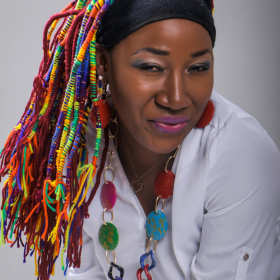

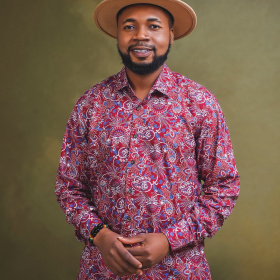


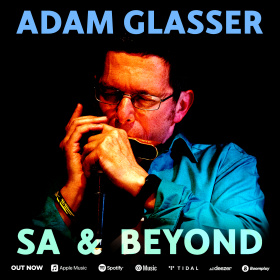









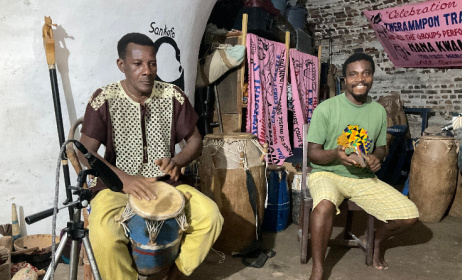



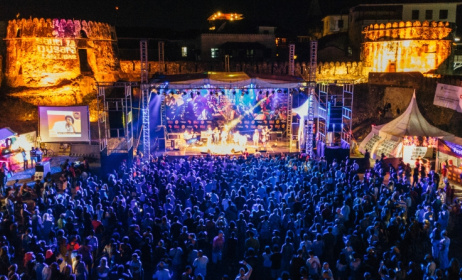
Comments
Log in or register to post comments